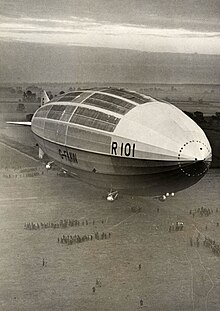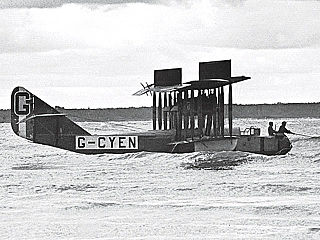
Marshal of the Royal Air Force (MRAF) is the highest rank in the British Royal Air Force (RAF). In peacetime it was granted to RAF officers in the appointment of Chief of the Defence Staff (CDS), and to retired Chiefs of the Air Staff (CAS), who were promoted to it on their last day of service. While surviving marshals of the RAF retain the rank for life, the highest rank to which officers on active service are promoted is now air chief marshal. Although general promotions to Marshal of the Royal Air Force have been discontinued since the British defence cuts of the 1990s, further promotions to the rank may still be made in wartime, for members of the Royal Family and certain very senior RAF air officers in peacetime at the discretion of the monarch; all such promotions in peacetime are only honorary, however. In 2012, Charles, Prince of Wales was promoted to the rank while in 2014 Lord Stirrup, who had served as Chief of the Air Staff and Chief of the Defence Staff for over seven years, was also promoted.
Air vice-marshal (AVM) is a two-star air officer rank which originated in and continues to be used by the Royal Air Force. The rank is also used by the air forces of many countries which have historical British influence and it is sometimes used as the English translation of an equivalent rank in countries which have a non-English air force-specific rank structure. Air vice-marshals may be addressed generically as "air marshal".
Air Marshal is a three-star air-officer rank which originated in and continues to be used by the Royal Air Force. The rank is also used by the air forces of many countries which have historical British influence, including the Commonwealth, and it is sometimes used as the English translation of an equivalent rank in countries which have a non-English air force-specific rank structure.

Air chief marshal is a four-star air officer rank which originated in and continues to be used by the Royal Air Force, where it is the most senior peacetime air force rank. The rank is also used by the air forces of many countries that have historical British influence and it is sometimes used as the English translation of an equivalent rank in countries which have a non-British air force-specific rank structure.
A flag officer is a commissioned officer in a nation's armed forces senior enough to be entitled to fly a flag to mark the position from which the officer exercises command.
Iraq Command was the Royal Air Force (RAF) commanded inter-service command in charge of British forces in Iraq in the 1920s and early 1930s, during the period of the British Mandate of Mesopotamia. It continued as British Forces in Iraq until 1941 when it was replaced by AHQ Iraq. It consisted of Royal Air Force, Royal Navy, British Army, Commonwealth and locally raised units, commanded by an RAF officer normally of Air Vice-Marshal rank.

Air Chief Marshal Sir Christopher Hugh "Chris" Moran, was a fast jet pilot and later a senior commander in the Royal Air Force. He was Commander-in-Chief of Air Command at the time of his unexpected death.

Chief of Air Force (CAF) is the most senior appointment in the Royal Australian Air Force (RAAF), responsible to the Chief of the Defence Force (CDF) and the Secretary of the Department of Defence. The rank associated with the position is air marshal (three-star). The role encompasses "the delivery of aerospace capability, enhancing the Air Force's reputation and positioning the Air Force for the future". It does not include direction of air operations, which is the purview of the Air Commander Australia, a two-star position responsible directly to CDF in such circumstances but nominally reporting to CAF.
The Royal Air Force Legal Branch (RAFLB) or Directorate Legal Services (DLS) - as it is better known - is the uniformed legal service provider for the Royal Air Force. It consists of solicitors and barristers qualified in a Commonwealth jurisdiction. DLS is headquartered at Air Command RAF High Wycombe. The Directorate is currently staffed by a mixture of members of:

Air Vice Marshal Sir Norman Duckworth Kerr MacEwen, was a senior commander in the Royal Air Force during the first half of the 20th century.
An officer of three-star rank is a senior commander in many of the armed services holding a rank described by the NATO code of OF-8. The term is also used by some armed forces which are not NATO members. Typically, three-star officers hold the rank of vice admiral, lieutenant general, or in the case of those air forces with a separate rank structure, air marshal.

An officer of two-star rank is a senior commander in many of the armed services holding a rank described by the NATO code of OF-7. The term is also used by some armed forces which are not NATO members. Typically, two-star officers hold the rank of rear admiral, counter admiral, major general, or in the case of those air forces with a separate rank structure, air vice-marshal.

The Royal Air Force College (RAFC) is the Royal Air Force training and education academy which provides initial training to all RAF personnel who are preparing to be commissioned officers. The College also provides initial training to aircrew cadets and is responsible for all RAF recruiting along with officer and aircrew selection. Originally established as a naval aviation training centre during World War I, the College was established as the world's first air academy in 1919. During World War II, the College was closed and its facilities were used as a flying training school. Reopening after the War, the College absorbed the Royal Air Force Technical College in 1966.
Air Vice Marshal Henry Meyrick Cave-Browne-Cave was an engineering officer in the Royal Naval Air Service during the First World War and senior commander in the Royal Air Force during the 1930s.

Air Vice Marshal Henry Neilson Wrigley, CBE, DFC, AFC was a senior commander in the Royal Australian Air Force (RAAF). A pioneering flyer and aviation scholar, he piloted the first trans-Australia flight from Melbourne to Darwin in 1919, and afterwards laid the groundwork for the RAAF's air power doctrine. During World War I, Wrigley joined the Australian Flying Corps and saw combat with No. 3 Squadron on the Western Front, earning the Distinguished Flying Cross; he later commanded the unit and published a history of its wartime exploits. He was awarded the Air Force Cross for his 1919 cross-country flight.

The Royal Air Force Medical Services is the branch of the Royal Air Force that provides health care at home and on deployed operations to RAF service personnel. Medical officers are the doctors of the RAF and have specialist expertise in aviation medicine to support aircrew and their protective equipment. Medical officers also carry out Aeromedical evacuations, providing vital assistance on search-and-rescue missions or emergency relief flights worldwide.
The Air Secretary is the Royal Air Force appointment of which the incumbent is responsible for policy direction on personnel management for members of the RAF. From 1978 to 1983 the Air Secretary was more often referred to as Air Officer Commanding Royal Air Force Personnel Management Centre. It is a senior RAF appointment, held by an officer holding the rank of air vice-marshal. The Air Secretary's counterpart in the British Army is the Military Secretary. The Royal Navy equivalent is the Naval Secretary.
Queen's Birthday Honours are announced on or around the date of the Queen's Official Birthday in Australia, Canada, New Zealand and the United Kingdom. The dates vary, both from year to year and from country to country. All are published in supplements to the London Gazette, and many are formally conferred by the monarch some time after the date of the announcement, particularly for those service people on active duty.












